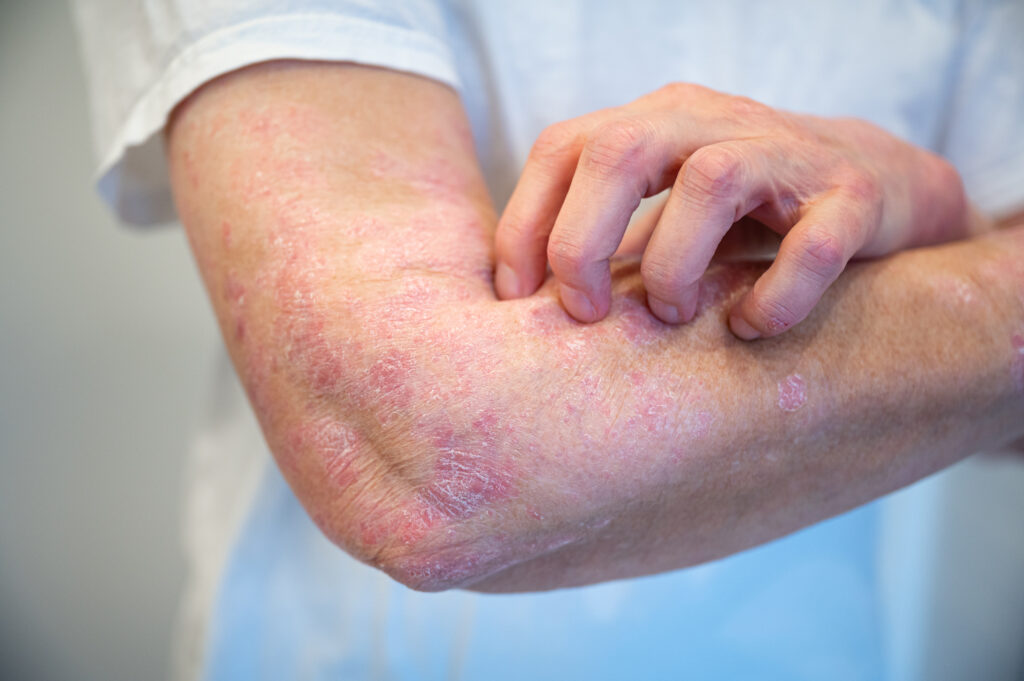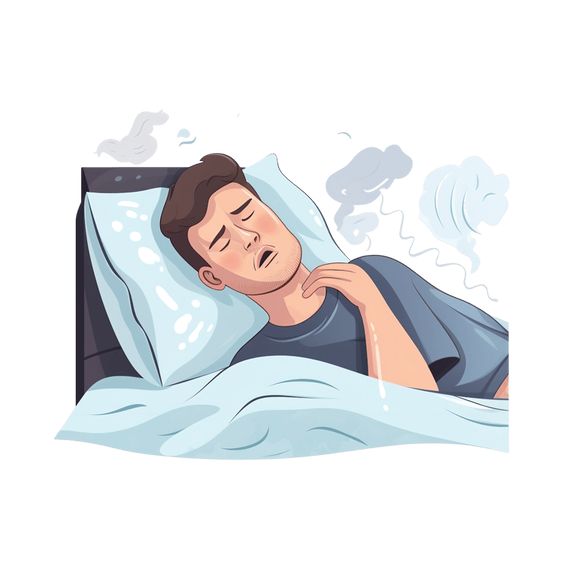
Approximately 7.5 million people in the United States have psoriasis. Psoriasis is an autoimmune condition that affects your skin, causing inflammation, discomfort, and itchiness. People with psoriasis have patches of thick, scaly skin called plaques, usually on the knees, elbows, scalp, and trunk. It is a chronic condition with no established cure, though treatments can help manage the symptoms when you have a flare-up.
Medical researchers believe psoriasis results from an immune system that begins to mistakenly attack healthy skin cells, viewing them as bacteria or other foreign substances. This attack leads to swelling and inflammation. It is not, however, a contagious condition. Scientists believe psoriasis may also cause your immune system to malfunction and start growing skin cells faster than usual. The most common type of psoriasis, plaque psoriasis, transforms these extra cells into plaque.
Types of Psoriasis and Their Symptoms
Plaque psoriasis usually affects the elbows, knees, scalp, and back. Some of the symptoms you can experience include:
- Raised and discolored plaques with silvery surface
- Bleeding
- Itchiness
- Pain or irritation
Inverse psoriasis is a less-common version of the condition in which a rash appears in areas of your skin that rub together. Symptoms can include:
- Itchiness
- Moist skin patches
- Shiny, discolored, smooth rashes
- Cracks in the skin creases
This condition is more typical in children, and the affected areas can easily get infected.
Another type of psoriasis is pustular psoriasis, which appears with small bumps filled with pus sitting on top of the plaque. Symptoms tend to be mild, with some itchiness and blisters, but getting medical help is vital; otherwise, the blisters can keep forming.
Nail psoriasis can cause skin discoloration as well as pitting and changes to your fingernails and toenails. The nail can separate from the nail bed in some cases.
Another type is guttate psoriasis, which can appear after exposure to a streptococcal infection. This type of psoriasis occurs mainly in children and young adults. It can appear as small drop-shaped spots on the legs, arms, or trunk.
The least common type of psoriasis is erythrodermic psoriasis. It can cover the entire body with a rash that peels and can itch or burn intensely.
Causes of Psoriasis
An overactive immune system is the leading cause of psoriasis. Your T-cells, which protect you from foreign substances, start attacking healthy skin cells, causing your body to speed up the creation of new skin cells. These cells pile up, creating plaque.
Like many other immune system issues, psoriasis can be hereditary. Environmental factors can trigger psoriasis, such as:
- Stress
- Cold, dry weather
- Alcohol
- Infections
- Skin injuries
Smoking can increase your chances of developing psoriasis and worsen the severity of the disease.
Psoriasis Treatment: Getting Relief for the Symptoms
As a first treatment, steroid creams and ointments are often effective for people with mild psoriasis. Some people benefit from ointments with vitamin D3 because they can be less irritating to the skin than corticosteroids.
Retinoids can also help. They are available as gels or creams, though they are not recommended for pregnant or breastfeeding women.
Calcineurin inhibitors are another good choice because they can soothe the skin and reduce the scaly buildup.
Coal tar can reduce itching, inflammation, and scaling. You can find it as shampoos, oils, and creams.
Light can help reduce skin inflammation and even slow the creation of new skin cells. Many people with psoriasis find their symptoms improve with warm weather and sunlight. Light therapy offers another way of treating psoriasis. It involves exposing the affected skin to controlled levels of natural or artificial light.
Oral medications can include steroids, which help with inflammation, as well as biologics. Biologics are a newer treatment option that alters your immune system’s reactions.
Methotrexate is a medication that can be administered weekly in one oral dose. It helps reduce the production of skin cells while also suppressing inflammation.
For severe psoriasis, you might turn to cyclosporine. It suppresses the immune system, so it cannot be used continuously for more than a year.
Living with Psoriasis
Managing symptoms can come down to knowing what triggers psoriasis flare-ups. Once you know how your immune system reacts to these triggers, you can do your best to prepare for the symptoms or do what you can to avoid them.
It is possible to live a healthy and productive life with psoriasis, especially if you have medications or therapies you can turn to for help when the symptoms begin.
Resource Links:
- “Skin Conditions by the Numbers” via American Academy of Dermatology Association
- “Plaque Psoriasis” via National Library of Medicine
- “Inverse Psoriasis: From Diagnosis to Current Treatment Options” via National Library of Medicine
- “Pustular psoriasis: Treatment Options” via American Academy of Dermatology Association
- “Nail Psoriasis: A Review of Effective Therapies and Recommendations for Management” via National Library of Medicine
- “Guttate Psoriasis” via National Library of Medicine
- “Erythrodermic psoriasis: pathophysiology and current treatment perspectives” via National Library of Medicine






